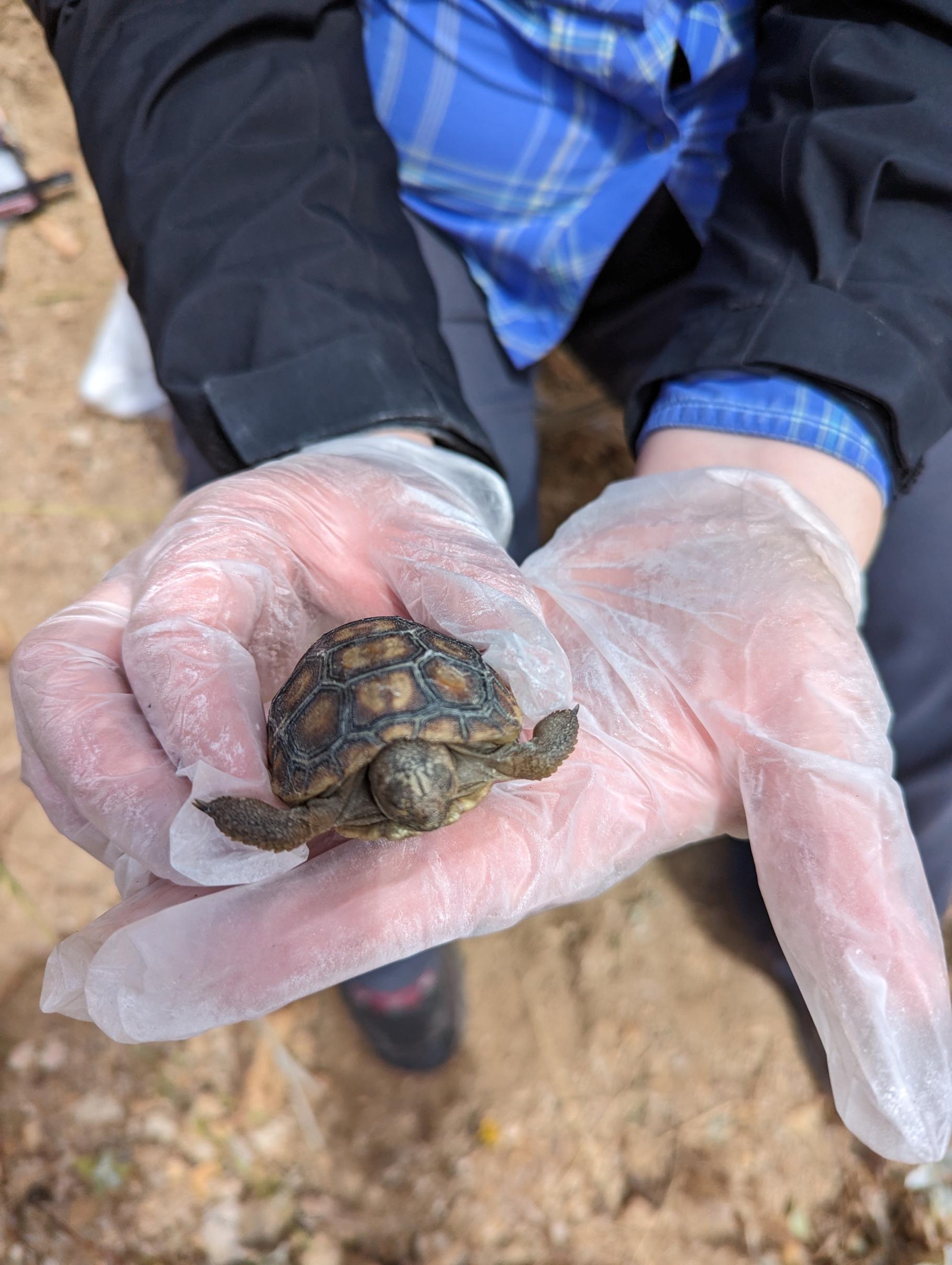Managing Biodiversity During Repowering at Mesa Wind
Brookfield Renewable Power & Transition’s Mesa Wind site and surrounding lands located in California contain habitat for several sensitive plant and wildlife species, including special status wildlife, such as the state and federally protected desert tortoise.
Mesa Wind has considered biodiversity in the evaluation and planning process to replace wind turbines as part of repowering activities. To minimize the adverse impacts to these sensitive species during construction, Mesa Wind instituted avoidance measures including the use of onsite environmental monitors and signage alerting construction workers and staff to the presence of the desert tortoise. Mesa Wind has also ensured access and availability of offsite habitat protection areas if relocation is required and aims to minimize further disturbance to the habitat throughout the life cycle of the project. In addition to managing the potential impact on the tortoise, the repowering design utilized the latest advances in wind turbine technology, reducing the number of turbines on the site from 460 to eight while generating an equivalent amount of power, minimizing potential further and ongoing disturbance to biodiversity in the area.
The measures ensure that the approach to managing biodiversity on the site reflects Brookfield Renewable Power & Transition’s following of the hierarchy of avoiding, minimizing and restoring habitat from impacts. These principles support its biodiversity management goals, particularly in biodiversity-sensitive areas.
Brazil and India: Screening for Biodiversity Sensitive Areas Across Assets
Brookfield Renewable Power & Transition also conducted pilots at a hydroelectric site in Brazil, located near the Campos de Cima da Serra key biodiversity area, and a utility-scale solar site in India, adjacent to a wild donkey sanctuary.
Through this process, these sites reviewed regional definitions of sensitive areas using the International Biodiversity Assessment Tool (IBAT) to pilot the screening process to identify sensitive areas. Through the screening pilot, it confirmed that the solar site in India had no interaction with the Priority Biodiversity present on the reserve, and confirmed that local studies and sensitive area mapping aligned with the IBAT screening results. As a result of the successful pilot, Brookfield Renewable Power & Transition expanded the screening process to include all of its globally operated assets.1




